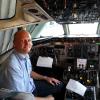
Sign in to follow this
Followers
0

Noise Abatement during Manually Flying
By
Michael Moe, in PMDG 737NGX | 737NGXu


By
Michael Moe, in PMDG 737NGX | 737NGXu